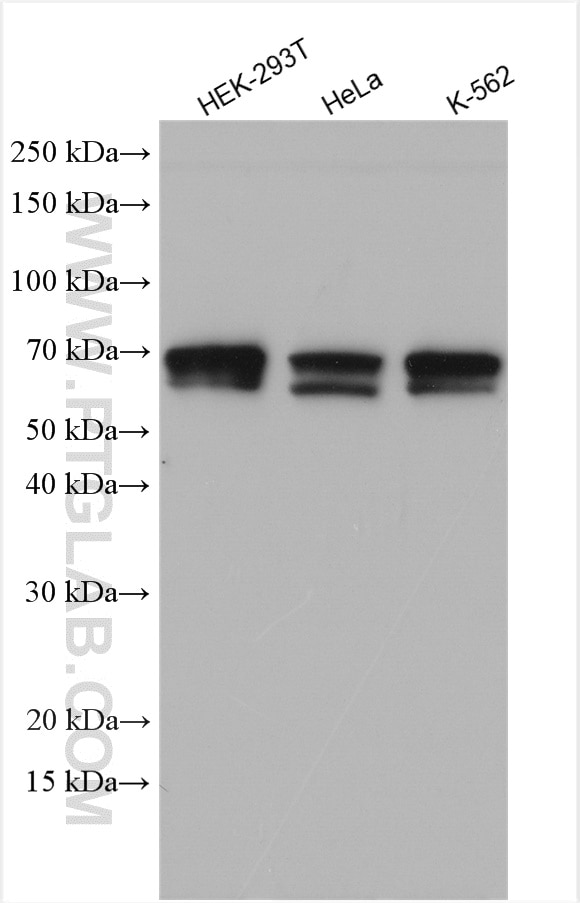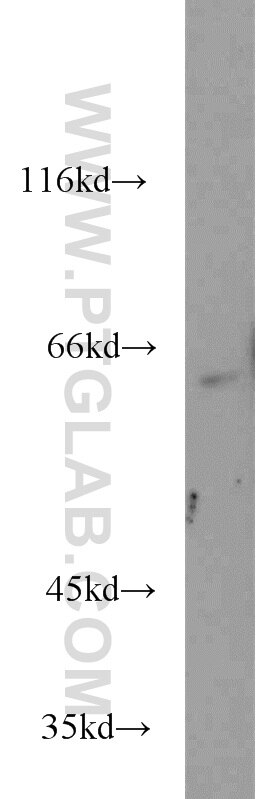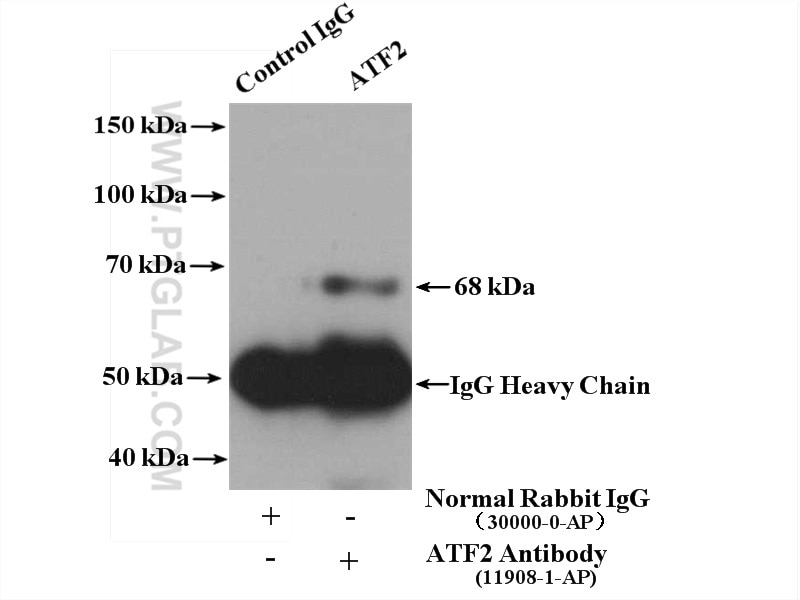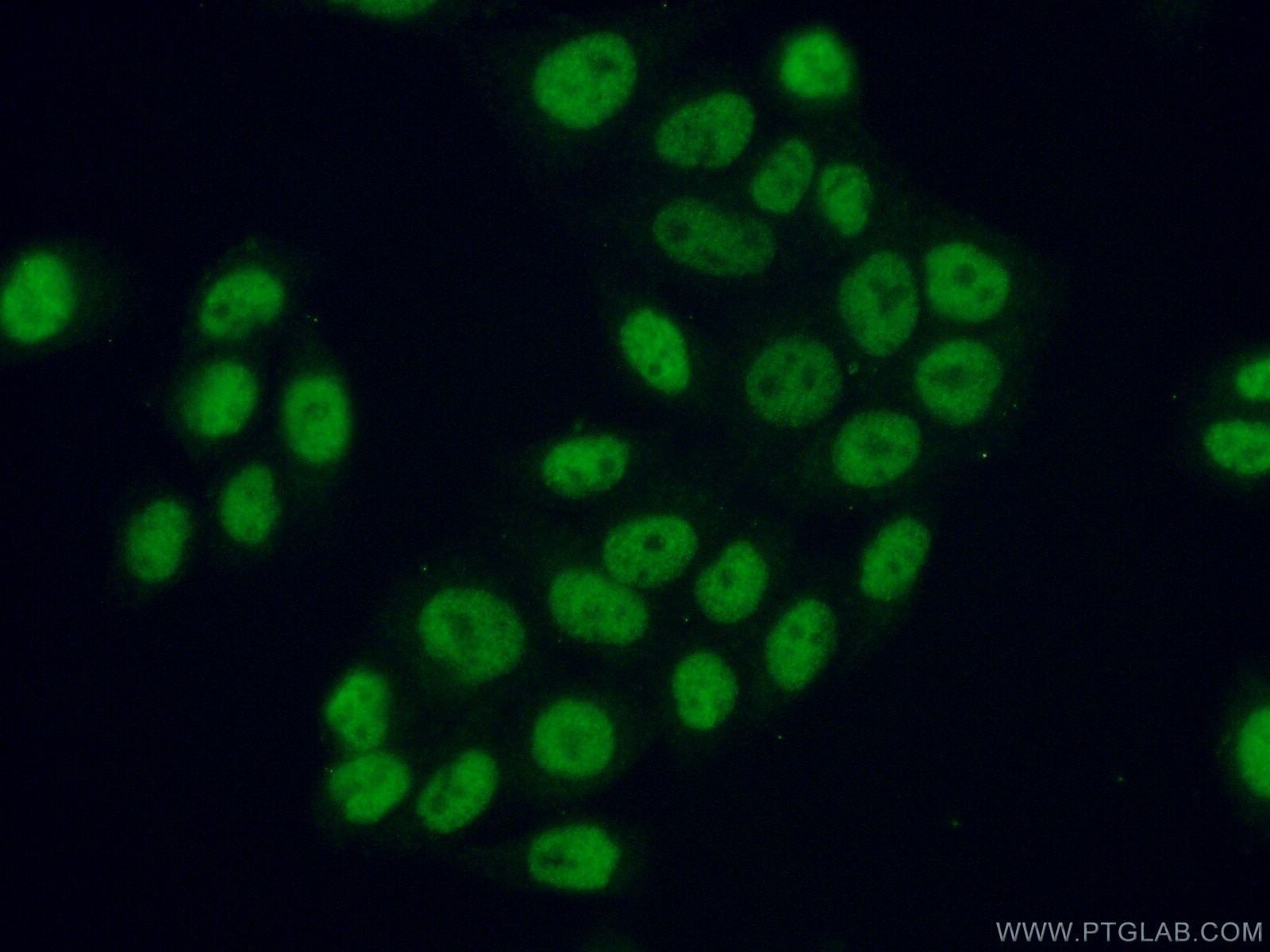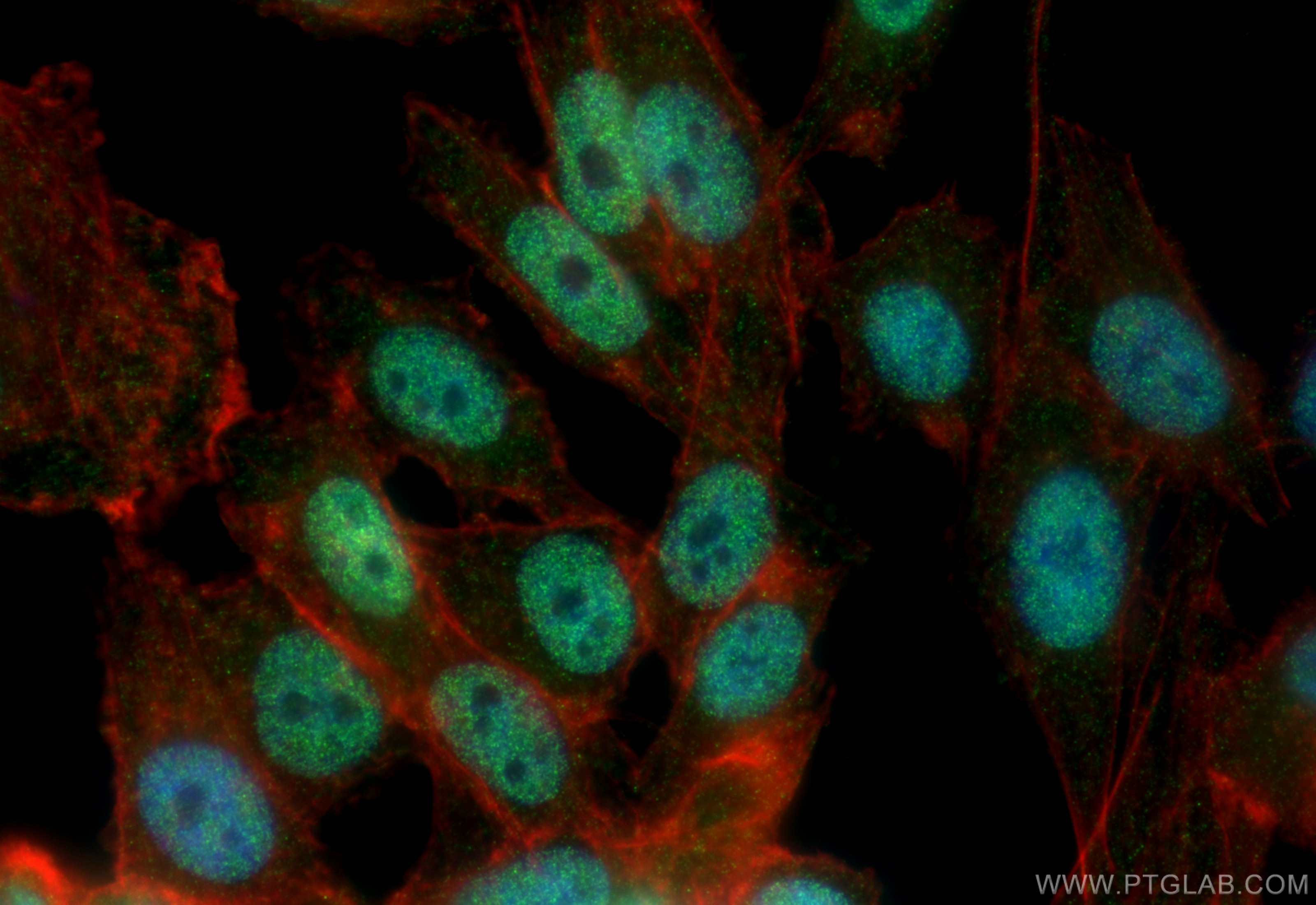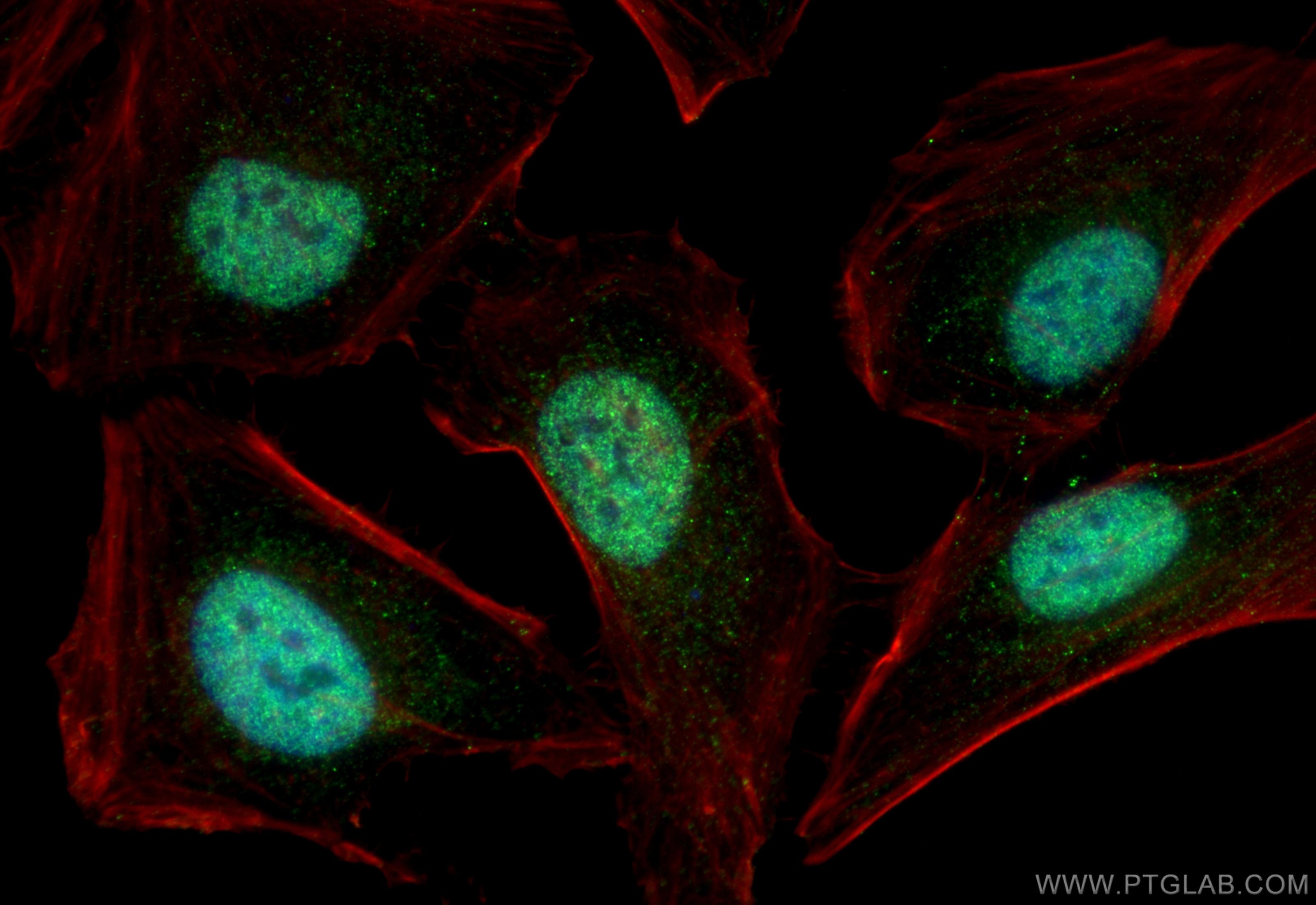Validation Data Gallery
Tested Applications
Recommended dilution
| Application | Dilution |
|---|---|
| It is recommended that this reagent should be titrated in each testing system to obtain optimal results. | |
Product Information
11908-1-PBS targets ATF2 in WB, IF/ICC, IP, Indirect ELISA applications and shows reactivity with human, mouse samples.
| Tested Reactivity | human, mouse |
| Host / Isotype | Rabbit / IgG |
| Class | Polyclonal |
| Type | Antibody |
| Immunogen | ATF2 fusion protein Ag2581 相同性解析による交差性が予測される生物種 |
| Full Name | activating transcription factor 2 |
| Calculated molecular weight | 209 aa, 23 kDa |
| Observed molecular weight | 60 kDa, 64 kDa |
| GenBank accession number | BC026175 |
| Gene Symbol | ATF2 |
| Gene ID (NCBI) | 1386 |
| RRID | AB_10695892 |
| Conjugate | Unconjugated |
| Form | Liquid |
| Purification Method | Antigen affinity purification |
| UNIPROT ID | P15336 |
| Storage Buffer | PBS only , pH 7.3 |
| Storage Conditions | Store at -80°C. |
Background Information
ATF2, also named as CREB2 and CREBP1, contains one bZIP domain and one C2H2-type zinc finger. It belongs to the bZIP family. ATF2 binds to the cAMP-responsive element(CRE), an octameric palindrome. It forms a homodimer or a heterodimer with c-Jun and stimulates CRE-dependent transcription. It is also a histone acetyltransferase (HAT) that specifically acetylates histones H2B and H4 in vitro; thus it may represent a class of sequence-specific factors that activate transcription by direct effects on chromatin components. ATF2 binds DNA as a dimer and can form a homodimer in the absence of DNA. It binds through its N-terminal region to UTF1 which acts as a coactivator of ATF2 transcriptional activity. This antibody can recognize all the isoforms of human ATF2. The molecular weight detected is larger than the theoretical value, which may be related to protein modification. About 65-68 kDa band detected in the articles(PMID: 19135136; PMID: 28628081 ).
